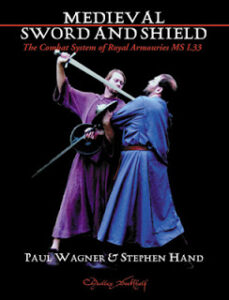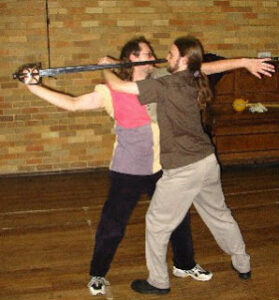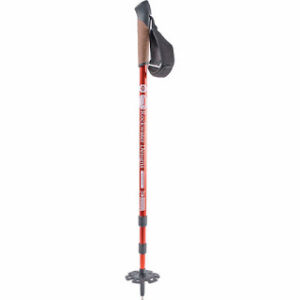I believe I have mentioned George Silver before on this blog. For those of you that don’t recall he was an Elizabethan gentleman famous for his criticism of the rapier. Many modern fencers revile him and often misquote him because of this, often having never actually read his arguments and oblivious to the fact that the very long rapiers of his day were very different to the epée and foils of the modern fencers.
One of the concepts that Silver has that has intrigued me is that certain weapons should be matched in proportion to the size of their user, which he terms as a weapon having “Perfect length”. Too long a sword is a hindrance in a packed melee and a shorter blade is more agile (at least for a weapon that is swung). Silver's method was:
“To know the perfect length of your sword, you shall stand with your sword and dagger drawn…… keeping out straight your dagger arm, drawing back your sword as far as conveniently you can, not opening the elbow joint of your sword arm, and look what you can draw within your dagger, that is the just length of your sword, to be made according to your own stature…..The perfect length of your two handed sword is, the blade to be the length of the blade of your single sword.”
The picture really sums this up better:

From this you can see that the swordsman can withdraw the point of his sword within the radius of his other hand to thrust. In a packed melee one can envision the swordsman grabbing a foe or pushing him away to arm’s length to run him through, even if there was not room to swing a weapon. We’ll call Silver’s way of determining optimum length “The Silver Measure”.


These two photos illustrate one of the reasons you would not want a sword that is too long. In the first photo the guy in brown has grappled the swordsman (Paul Wagner) and is doubtless about to thrown him to the ground and stomp him dead. The sword is short enough that the swordsman can stab the grappler before this can happen. In the second illustration (from the cover of a book by Paul Wagner) you can see that the swordsman in purple has gained control of his foes arms with his buckler arm and is bringing his point into action to finish the fight before he can free himself.
While I can understand Silver’s logic, his illustration for determining “perfect length” seemed a bit ambivalent to me. Thinking on the subject it occurred to me that the optimum length for a sword could be defined as:
“The shortest blade that can defend the remotest part of your body.”
The shorter a blade is the more agile it will be, at least for a swung weapon. If we take your remotest area to be your ankle your blade should be just long enough to protect this. Weapons such as quarterstaffs, spears and other polearms are often applied against the shin or ankle.
You can find this distance by holding a yardstick and letting your arm hang by your side. I’m 5'11" and long legged, so for me this distance measures as about 30". When moving around your legs are going to be slightly bent so there is a degree of leeway in this measurement. Luckily, katanas can be found with 29" blades so I am catered for. A bonus of selecting your blade length this way is that this also gives a sword that is not too long when worn on the belt. A shorter blade is also faster to draw and bring into action.
Since I came up with that theory I’ve found recommendations that the correct length for a katana is one that allows you to hold your arm by your side without the tip touching the ground, so I was on the right lines. We’ll call this way of determining optimum length “The Katana Measure”. Sometime later I came across this table of recommend blade lengths for katanas based on height. These recommendations suggest that a blade be around 38-40% of the user’s height.

The other night it also occurred to me that the distance I got measuring from my hand down to my ankle is very close to the length of my arm, fingertips to shoulder. According to Vitruvius the length of an arm from fingertips to armpit should be 3/8ths of the total height, which is about 37.5%, so the length from fingertips to shoulder will be close to the 38-40% recommended above.
Using Silver’s method (if I am doing it right) gives me a much longer maximum length for a blade, about 36", just over half my total height. According to Paul Wagner’s book most Elizabethan swords of the type Silver was likely to have favoured have blades of up to 35". Remember that I am above the average height for a modern male (5'8-5'9"). I think the Elizabethan era was one of those periods when the average Englishman was shorter than modern times, so a 35" sword would have been quite long in proportion. Some of the rapiers Silver loathed were four to five feet long, overall. Queen Elizabeth was also annoyed by the fashion for overly long swords and decreed anyone entering the gates of London with a sword longer than a yard in the blade would have the excess broken off.
Having a sword just long enough to defend your ankle seems very logical, but with the possible exception of the Japanese seems to be quite rare. Viking swords are about 30" in blade length. Like many early Medieval populations, the Vikings tended to be well exercised and reasonably healthy so were probably at least equal to modern people in average height. In the middle ages in Europe swords got longer, varying from about 33-38". One reason for this may have been the increasing emphasis on mounted warfare, where greater reach was desirable. Improved armour would also have been a factor. Weapons got heavier and longer for increased effect on armour. Improved protection also made the defensive capabilities of weapons of less importance. The cut and thrust sword seems to have remained this size through to the industrial age. Many of the European and North American infantry swords from later periods seem to average 32" in the blade. This would have been more than 40% of the average height of this period. I have number of swords of 32" length and while many of them are nice weapons they do feel too long and a little too heavy. Shaving a few inches off the blade would doubtless make them faster, handier and even more practical to wear.
I am going to leave the subject here for the moment, but it is likely that the topic of proportional length will arise again, not just in respect to swords.







